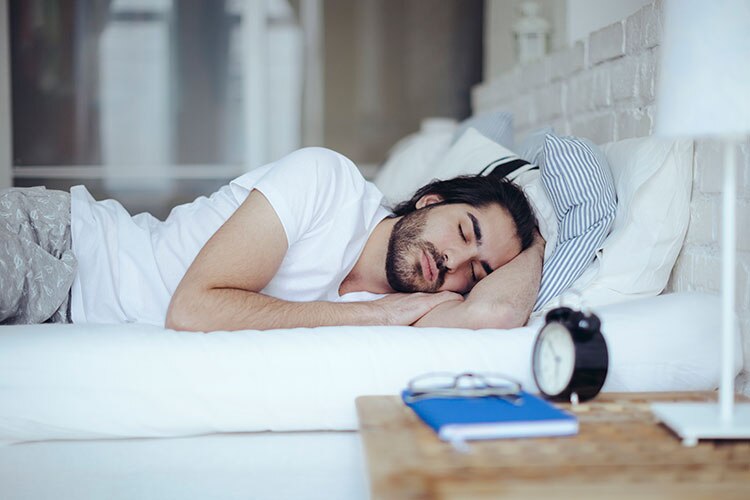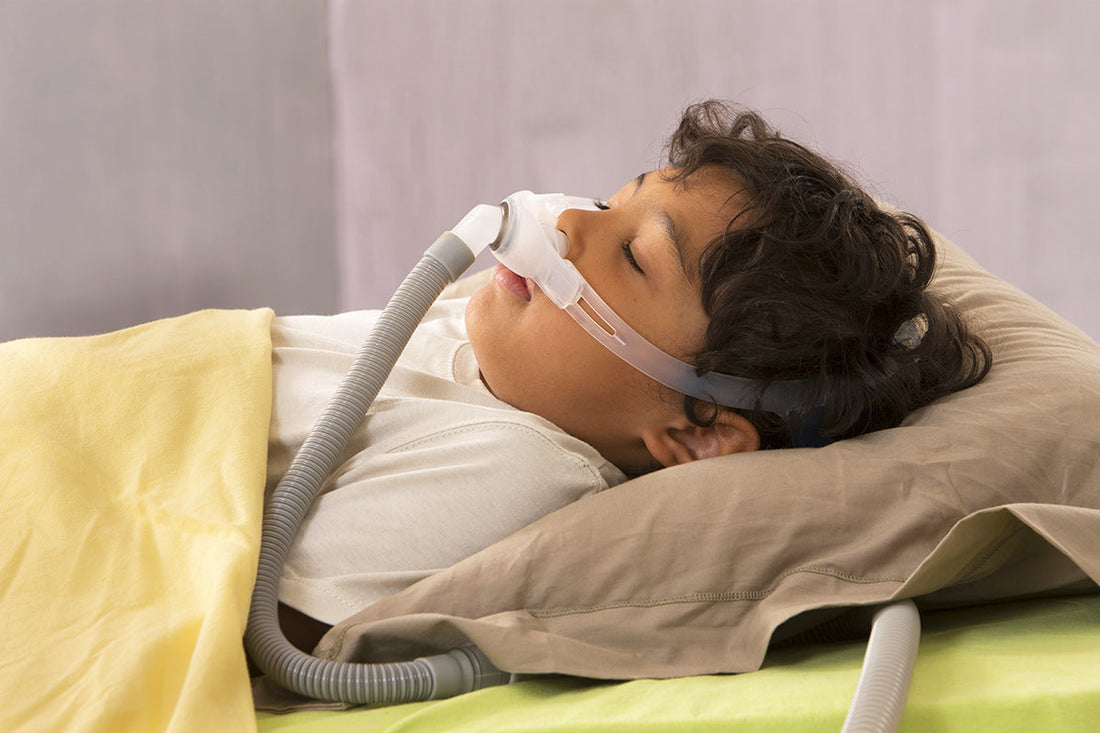News
OSA vs CSA: The Main Differences
wp:paragraph Sleep apnea is a serious sleep disorder that comes in two different forms; Obstructive Sleep Apnea (OSA) and Central Sleep Apnea (CSA). While both forms of sleep apnea cause a pause in breathing while you sleep, the reasoning behind this breathing interruption is what divides these two forms. /wp:paragraph wp:paragraph Obstructive Sleep Apnea /wp:paragraph wp:paragraph OSA is the more common of the two types. This involves an actual blockage or collapse of the airway that causes the apnea episode. OSA is most often treated with the use of a CPAP machine, and it more commonly occurs in patients who are male, middle-aged, and/or overweight. /wp:paragraph wp:paragraph Central Sleep Apnea /wp:paragraph wp:paragraph CSA is not as common as the two types of sleep apnea. Unlike OSA, the pause in breathing is actually caused by your brain not signaling the airway muscles to take in the air you breathe while you are sleeping, thus causing apnea episodes. Anyone can get CSA, though it is more common in adults over age 65 and usually occurs as a result of a serious illness that requires medical intervention. /wp:paragraph wp:paragraph The differences /wp:paragraph wp:paragraph As mentioned above, CSA does not involve a physical blockage of the airway the way OSA does. This means that a CPAP machine is generally more effective for OSA patients (though some doctors may occasionally recommend a CPAP machine for CSA patients too). Snoring, while a very common symptom for OSA, often does not occur in CSA patients. /wp:paragraph wp:paragraph Both forms of sleep apnea, if left untreated, can cause fatigue and sleepiness during the daytime, morning headaches, and restless sleep overall, as the apnea episodes often tend to wake you up while sleeping. This is why seeking medical attention is vital in order to correctly diagnose which form of sleep apnea you have and how to properly treat it. /wp:paragraph
about OSA vs CSA: The Main DifferencesThe Connection Between Sleep and your Mood
wp:paragraph Sleep has a lot to do with your overall mood. You may already notice that nights with poor sleep can lead to you feeling irritable or stressed the following day, and nights where you sleep well lead to you feeling relaxed and happy. /wp:paragraph wp:paragraph There have been many studies done over the years linking the lack of sleep to your overall mood. Here are a few factors to consider as to how poor sleep may be affecting your mood. /wp:paragraph wp:paragraph Stress /wp:paragraph wp:paragraph Stress happens to all of us at some point, and that tends to be one of the top causes of insomnia. Stress can also cause a lack of consistency with your sleeping routine, leaving you feeling moody the following day. Finding ways to manage day-to-day stress is important. Make sure you are also practicing good sleep hygiene habits and avoiding the use of technological devices before bedtime. /wp:paragraph wp:paragraph Not getting enough sleep /wp:paragraph wp:paragraph The average adult requires around 8 hours of sleep each night, though some may perform better with closer to 9 or 10 hours. Lack of sleep tends to be a huge influence on your mood, which is why it is so important to make sure you are getting enough sleep. Make sure you keep a consistent sleeping routine that includes going to bed at the same time each night and waking up at the same time each morning. /wp:paragraph wp:paragraph Chronic Insomnia /wp:paragraph wp:paragraph Many adults suffer from chronic insomnia, which is where you have trouble falling and staying asleep at night and you may find yourself lying awake in bed for as much as several hours. There are many reasons for this; while stress is often a factor, there can be times when there is a bigger issue at hand that may require medical treatment, including night terrors, sleepwalking and untreated sleep apnea. /wp:paragraph wp:paragraph When to seek help /wp:paragraph wp:paragraph Sleep is vital to your overall mood and happiness. One night of sleep that is “off” is not generally a problem, as long as you get back on track the next day. If you have tried everything and still cannot sleep well, then it may be time to seek medical advice, especially if this is affecting your mood and/or performance during the daytime. This way you can work with your doctor to find a solution to help you sleep better. /wp:paragraph
about The Connection Between Sleep and your MoodIs your Mattress Hurting your Sleep?
wp:paragraph If you are having trouble sleeping at night, your mattress may be to blame. /wp:paragraph wp:paragraph Since we do spend about a third of our life sleeping, skimping out on the quality and comfort of your mattress is not something you want to do! According to experts, the surface in which you sleep can have a huge impact on the overall quality of your sleep. /wp:paragraph wp:paragraph How to know when it’s time to replace your mattress /wp:paragraph wp:list If your mattress is older than 8-10 years. This is the general life span for most mattresses If you are waking up with any sort of chronic pain of soreness in your body If you are tossing and turning more than normal throughout the night If your mattress is lumpy or beginning to sag /wp:list wp:paragraph Tips for finding the right mattress /wp:paragraph wp:list Find one with the firmness that works for you: most mattresses come in firm, medium and soft. Which one works best for you will depend on your primary sleeping position, comfort level and how it caters to the pressure points on your body. Test the mattress out in person before making the purchase. Don’t just sit on it for a few seconds. Take a few minutes to lie down in the position you normally sleep in and roll around a few times, just to make sure it’s a good fit. If you are not able to try out the mattress before buying it, make sure there is a sufficient return policy, just in case it ends up not working out If you and your partner will be using this mattress, make sure it is a good fit for both of you. Most newer spring mattresses have individual coils, which means if one of you moves, the whole mattress won’t move with it. Give yourself time to adjust! It may not feel absolutely perfect the first night, most mattress companies have a warranty of at least a few months after purchase. /wp:list
about Is your Mattress Hurting your Sleep?Sleep Apnea in Children
Think sleep apnea doesn’t affect children? Think again. While it is not as common, children can occasionally be affected by a sleep disorder called pediatric obstructive sleep apnea. OSA in children may look a little different in children than it does for adults, however, it is important to remember that children require a good night’s sleep to help aid their growing bodies. Because of this, seeking medical help is very important in order to treat sleep apnea symptoms. Causes and Risk Factors Some of the most common risk factors for sleep apnea in children include enlarged tonsils and adenoids, obesity, and underlying health conditions such as Down Syndrome, Cerebral Palsy, and craniofacial abnormalities, just to name a few. Some children may also develop OSA, simply based on family history of the condition. Symptoms to Watch Much like adults, children who have OSA may experience symptoms such as snoring, restless sleep, pauses in breathing, and coughing or choking. Occasionally children may have other symptoms such as night sweats, bed-wetting, or sleep terrors. Untreated OSA in children can also have an effect on how a child functions during the daytime, including learning and/or behavioral problems, hyperactivity, poor weight gain as well as poor performance in school, and difficulty paying attention. Treatment OSA treatment in children will depend on many factors. Your doctor may refer your child to a sleep specialist for further examination of their symptoms. Managing weight in children with obesity issues will often help to treat mild cases of sleep apnea in children. Children with enlarged tonsils and/or adenoids may require surgery in order to treat the sleep apnea. Some cases may even require the use of a CPAP machine to treat the sleep apnea, whether temporary or permanent, though this is not as common for children as it is in adults. Early diagnosis and treatment are key to preventing complications that could affect the child’s growth and development. If your child consistently wakes up feeling tired or is experiencing problems functioning during the daytime, then it’s time to call your doctor. Left untreated, OSA in children can lead to some serious health problems that could cause issues with their growth and development.
about Sleep Apnea in Children



